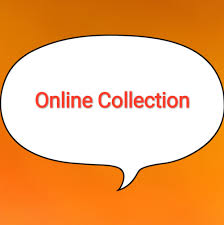The Benefits of Building an Online Collection
In today’s digital age, the concept of collecting has expanded beyond physical objects to include online resources. An online collection refers to a curated repository of digital content that is accessible via the internet. This modern approach to collecting offers numerous benefits and opportunities for individuals and organizations alike.
Accessibility and Reach
One of the primary advantages of building an online collection is the increased accessibility it provides. Unlike traditional collections that are limited by physical space and geographical location, an online collection can be accessed from anywhere in the world with an internet connection. This broadens the reach of your collection and allows a global audience to engage with your curated content.
Preservation and Conservation
Digitizing physical collections and creating online archives helps preserve valuable historical and cultural artifacts for future generations. By storing digital copies of items that may be fragile or susceptible to damage, you can ensure their long-term conservation. Additionally, digital preservation techniques can help prevent loss due to disasters or deterioration over time.
Enhanced Searchability and Organization
An online collection enables efficient searchability and organization of content through metadata tagging and categorization. Users can easily search for specific items or topics within the collection, saving time and enhancing their overall browsing experience. This structured approach to organizing content also facilitates research and exploration within the collection.
Interactivity and Engagement
Online collections offer opportunities for interactivity and engagement with users through features such as multimedia content, interactive exhibits, virtual tours, and user-generated contributions. These interactive elements enhance user experience, encourage exploration, and foster a sense of community around the collection.
Cost-Effectiveness
Building an online collection can be a cost-effective alternative to maintaining physical collections, as it eliminates expenses associated with storage space, security measures, climate control, and conservation efforts for tangible objects. Online collections also reduce costs related to physical distribution and exhibition of items.
Conclusion
In conclusion, creating an online collection offers a range of benefits including increased accessibility, preservation of cultural heritage, enhanced searchability, interactivity with users, and cost-effectiveness. Whether you are a museum curator looking to digitize artifacts or a private collector seeking to share your passion with a wider audience, building an online collection can open up new possibilities for showcasing and preserving valuable resources in the digital realm.
Navigating Your Online Collections: A Step-by-Step Guide
The Security of Online Payments to Debt Collectors: What You Need to Know
4. Exploring the Vast
- What is online collections?
- How do I find my collections online?
- Is it safe to pay a debt collector online?
- What is the largest online art collection?
What is online collections?
An online collection refers to a curated repository of digital content that is accessible via the internet. It encompasses a wide range of digital resources, including documents, images, videos, audio files, and more, that are organized and made available for exploration and research online. Online collections serve as virtual archives that preserve cultural heritage, historical artifacts, scientific data, and other valuable materials in a digital format. By digitizing and curating these resources, online collections offer users worldwide the opportunity to access and engage with diverse content from various sources conveniently through web-based platforms.
How do I find my collections online?
To find your collections online, start by determining where your collections are stored or hosted. If you have digitized your collections and uploaded them to a specific platform or website, you can typically access them by logging into that platform using your credentials. Utilize search functions or navigation tools provided on the platform to locate your collections based on keywords, tags, or categories. If your collections are part of a larger online database or repository, you may need to use advanced search features or filters to narrow down the results and pinpoint your specific items. Additionally, reaching out to the administrators or curators of the online collection for guidance on locating your items can also be helpful in navigating and accessing your collections effectively.
Is it safe to pay a debt collector online?
When considering whether it is safe to pay a debt collector online, it is essential to exercise caution and verify the legitimacy of the collection agency. Before making any online payments, ensure that you are dealing with a reputable and licensed debt collection agency. Look for secure payment options, such as encrypted websites or payment portals, to protect your financial information. Additionally, always confirm the debt amount, payment terms, and collection agency details before proceeding with any online transactions. If you have concerns about the authenticity of the debt or the collection process, seek advice from a financial advisor or legal professional to safeguard your interests when making online payments to debt collectors.
What is the largest online art collection?
One of the most frequently asked questions regarding online collections is, “What is the largest online art collection?” The answer to this question is constantly evolving as more institutions and organizations digitize their art holdings and make them accessible online. Currently, the largest online art collection is difficult to pinpoint definitively due to the vast number of museums, galleries, and digital archives that house extensive art collections. Major institutions such as The Metropolitan Museum of Art, The Louvre, The British Museum, and Google Arts & Culture are known for their significant online art collections that span various genres, styles, and time periods. These digital repositories offer a wealth of artistic treasures for art enthusiasts and researchers to explore and appreciate from anywhere in the world.

